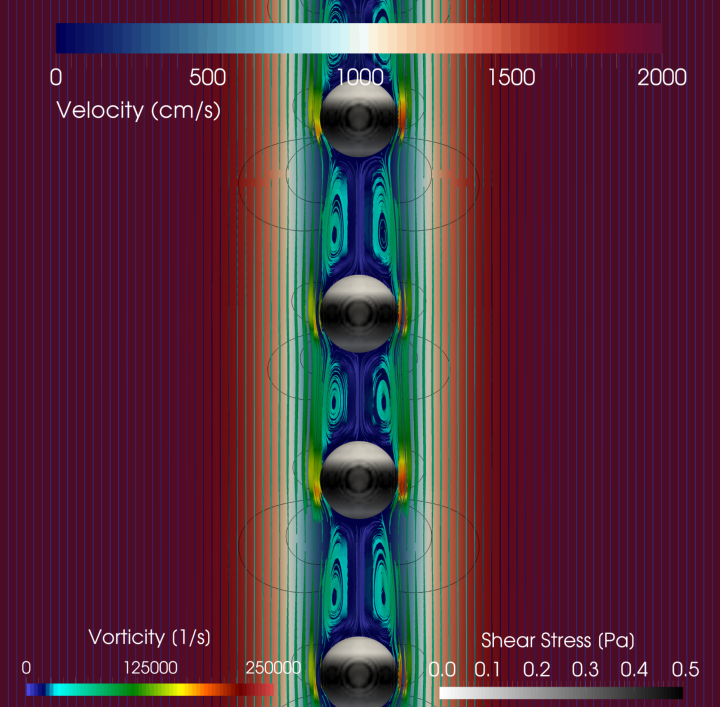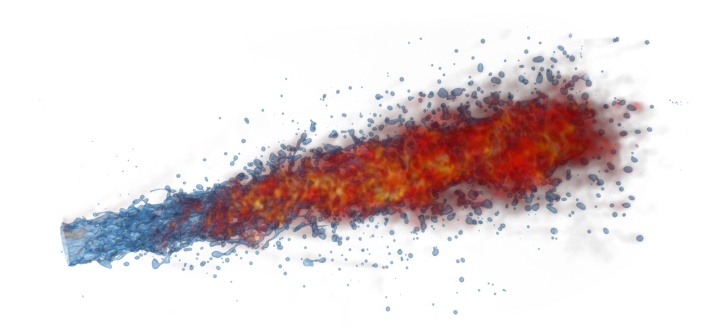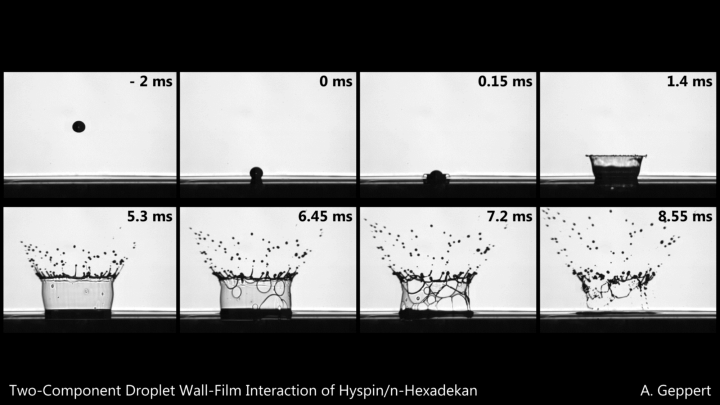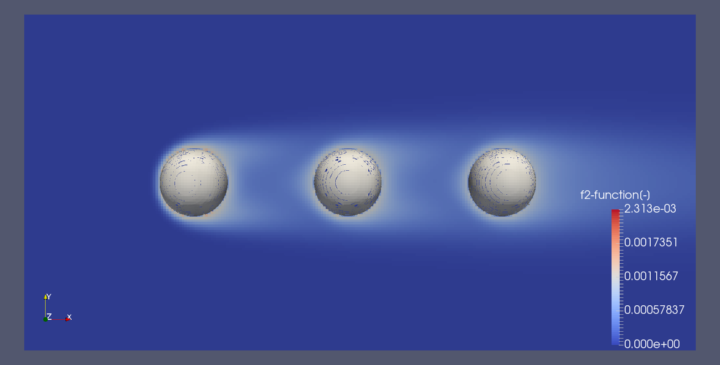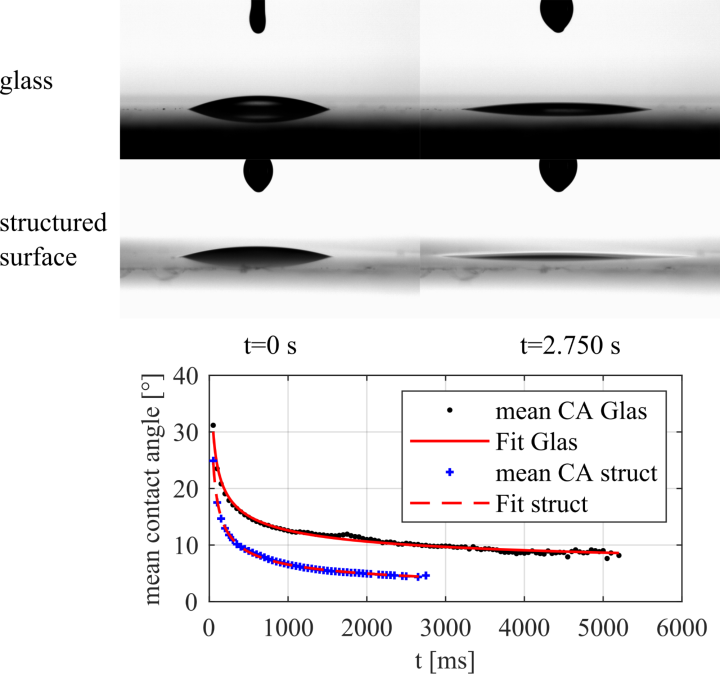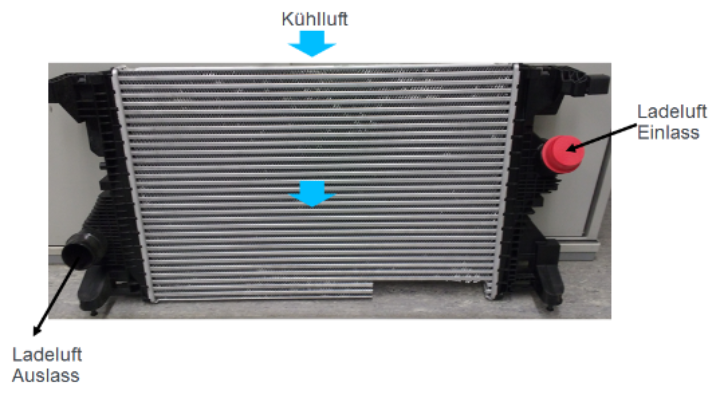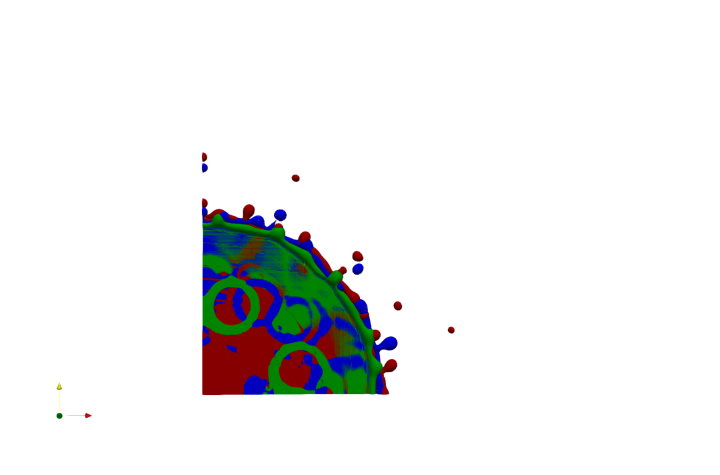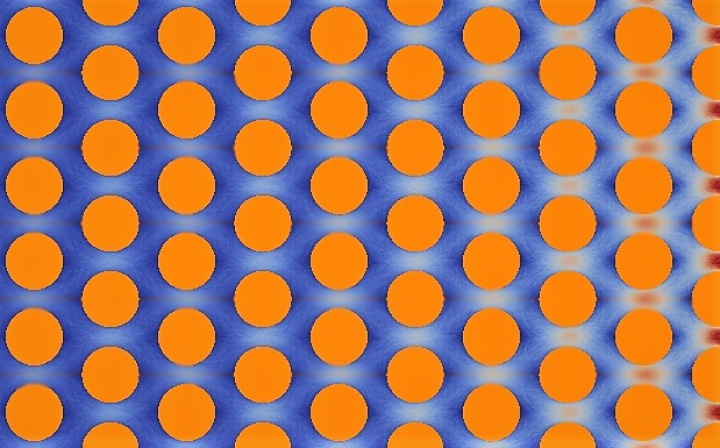Topics of droplet dynamics at ITLR
Research groups involved
- GRK DROPIT
- SFB-Transregio 75
SFB-Transregio 75 - Simtech Exzellenzcluster
Simtech Exzellenzcluster
Experimental
The objective is to better characterize near- and supercritical injections. Therefore, jet breakup mechanisms are investigated within the shock tube or the high pressure chamber at ITLR by the means of laser-based optical measurement techniques. For a more precise determination of droplet size distributions within the spray measurement methods such as (polarized) elastic light scattering, shadowgraphy or white light extinction, are applied. The usage of laser-induced thermal acoustics (LITA) brings insights to the mixing of the fluid and its ambiance.
Contact: Valerie Gerber, M. Sc.
The objective of the research efforts in this topic is to investigate the spreading behavior of droplets on super-hydrophilic micro-structured surfaces. Herein, the effects of different structure patterns, the wetting behavior defined by the level of hydrophily, liquid properties and impact parameters as velocity, droplet diameter and impact angle are going to be evaluated. For the experiments a test rig is set up to capture the impact at very high frame rates up to 1.000.000 frames per second with three different perspectives.
Contact: Patrick Foltyn, M. Sc.
Research network: Droplet Interaction Technologies "DROPIT"
The impact of droplets onto thin films of a different liquid is of significant interest for a variety of natural and industrial processes, but this is still an out of focus topic in research. Thus, the objective of this work is to revise existing knowledge on one-component interactions to assess if the proposed models and principles are directly applicable to binary interactions or if they there is a need for modifications. The second step is to implement necessary modifications and propose a unified treatment for droplet wall-film interactions.
Contact: Dipl.-Ing. Anne Geppert
The aim of the project is to investigate the drop impact on thin wall films, in particular the so-called "crown", an inverted truncated cone formed during the impact. A unified approach will allow the observation of the microscopic flow in the thin film and the macroscopic crown properties to better understand splashing of different fluids. The so-called splashing depends on various parameters such as drop size distribution and mixing. In addition, the scaling of kinetic crown parameters should contribute to the determination of the underlying instability mechanisms. High speed imaging and modern visualization techniques such as micro-PIV for transient flows are used to capture micro- and macroscopic flows during splashing.
Contact: Ronan Bernard, M. Sc.
Research network: Droplet Interaction Technologies "DROPIT"
This project is part of the International Research Training Group (GRK 2160/1) Droplet Interaction Technologies (DROPIT). One of the main objectives of the project is the development of novel optical techniques such as micro Particle Image Velocimetry (micro-PIV), which will be applied to the interaction between droplets and wall film. The project aims to develop a one-to-one understanding of macroscopic phenomena such as the interaction between droplets and wall film and the corresponding microscopic flow fields using measurements extracted from micro-PIV.
Contact: Dr. Visakh Vaikuntanathan
Research network: Droplet Interaction Technologies "DROPIT"
In order to better understand processes in clouds, experiments are carried out to investigate the formation of graupel and gravel. This occurs when supercooled droplets collide with snow or ice crystals. In addition, the formation and structure of rough ice will be investigated. In this experimental setup, supercooled or already frozen drops hit a surface. The main focus is on the interaction of the incoming drops with the drops already deposited on the surface.
Contact: Verena Kunberger, M. Sc.
Research network: SFB Transregio 75 "SFB TRR75"
Disintegration processes of liquid fuel injection within combustion chambers are one of the most important parameters for efficient and stable combustion. Especially for high pressures exceeding the critical value of the injected fluids mixing and evaporation processes as well as fundamental changes in fluid behaviour are not fully understood yet. This is of particular interest for the transition from a classical two phase evaporation to a diffusive mixing. Note, that diffuse mixing processes of a fluid in a solvent do not require a material interface as a evaporation does. The material interface vanishes as the mixture transitions to a supercritical state (T>Tkrit,p>pkrit).
The objective of this field of research is twofold. In unary systems microscopic investigations made a distinction between different regions above the critical pressure possible. Based on this distinction macroscopic investigation of these difference in fluid behaviour is conducted by measuring sound propagation (speed of sound), heat transfer processes (thermal diffusivity) and relaxation behaviour (acoustic damping) using Laser Induced Thermal Acoustics (LITA). Besides the investigation in unary systems the droplet injection in environments close to or above the critical point of the injected fluids is being investigated. LITA enables the investigation of the speed of sound in the droplets wake. Additionally phenomenological investigations are conducted to characterise the droplet evaporation. In conjunction with this observations reflections and refractions on the material interface are used as in indicator for the existence of the material interface of the injected droplet.
Contact: Christoph Steinhausen, M. Sc.
Research network: SFB Transregio 75 "SFB TRR75"
The injection of water into the compressor inlet of stationary gas turbines to increase its power output is nowadays widely used. The current investigation focusses on the understanding and modelling of the underlying processes. Both, experimental and numerical studies are performed. Experimentally, the desintegration process of droplets and the behaviour of water rivulets under cross flow is observed. Numerically, DNS calculations are performed concentrating on the evaporation of droplets.
Contact: Adrian Seck, M. Sc.
Numerisch
Tropfenkollisionen bei hoher kinetischer Energie, beispielsweise in Sprays, führen zur Desintegration des Stoßkomplexes und zur Ablösung von Sekundärtropfen von dessen Rand ("shattering"). Ein tiefgehendes Verständnis der Kollisionsdynamik ist eine Voraussetzung zur Vorhersage des Verhaltens von Sprays und kann mithilfe Direkter Numerischer Simulationen gewonnen werden. Auch Kollisionen nicht mischbarer Fluide sind für zahlreiche technische Anwendungen von großer Relevanz. Zur Simulation dieser Mehrphasenprobleme wird das ITLR-eigene Simulationsprogramm FS3D verwendet.
Kontaktperson: Dr.-Ing. Kathrin Schulte (geb. Eisenschmidt) Habilitandin.
Forschungsverbund: SFB Transregio 75 "SFB TRR75" (Geschäftsführerin und Teilprojektleiterin)
EXC 2075 Cluster of Excellence "Data-Integrated Simulation Science (SimTech)" (Participating Researcher, Teilprojektleiterin)
Fellow im Margarete von Wrangell-Habilitationsprogramm
Die Interaktion von Flüssigkeitströpfchen mit der Umgebung spielt eine wesentliche Rolle, vor allem in der Natur (bei Regentropfen, Nebel oder Wolkenbildung) sowie in technischen Systemen wie bei Sprays in der Medizin, der Einspritzung in Raketenbrennkammern, in der Landwirtschaft bei Bewässerung oder Pflanzenschutz oder auch bei Beschichtungsvorgängen und Sprühkühlung. Um die Systemeffizienz solcher Anwendungen zu verbessern, müssen die exakten Tröpfchengrößen und die zugehörigen Verdampfungsraten, ihre entsprechende Größenverteilung, die Tropfengeschwindigkeiten oder auch die Widerstandskräfte genau bekannt sein. Diese Eigenschaften können jedoch durch die Annäherung und anschließende Koaleszenz von Tropfen (Grouping) sowie durch deren Verformung und Schwingung (Oszillation) beeinflusst werden. Für ein besseres Verständnis der involvierenden Mechanismen, werden grundlegende, aber relevante Vorgänge von Mehrphasenströmungen mit dem ITLR in-house Code Free Surface 3D mittels Direkter Numerischer Simulation durchgeführt und detailliert analysiert.
Kontaktperson: Matthias Ibach, M.Sc.
Forschungsverbund: SimTech
Bei der Simulation von Verdunstungsprozessen ist die Bestimmung der Kraftstoffmenge, die zu einem bestimmten Zeitpunkt verdunstet, und des Kraftstoffmassenstroms über die Ränder der Rechenzelle von entscheidender Bedeutung. Mit Hilfe von DNS Simulationen unter Verwendung des Programmpakets FS3D wird das Geschehen innerhalb einer Rechenzelle detailliert simuliert. Das Rechengebiet der DNS entspricht somit einer/weniger Rechenzellen der später eingesetzten LES oder RANS Rechnungen. Ziel des Projekts ist es, einen alternativen Modellierungsansatz zur Beschreibung des Tropfenverdunstungsprozesses zu entwickeln, welcher unabhängig von der verwendeten Gitterauflösung ist und die Transportmechanismen in der tropfennahen Umgebung adäquat wiedergibt. Zudem soll das entwickelte Modell in der Lage sein, die Wechselwirkung zwischen verdunstenden Tropfen zu berücksichtigen.
Kontaktperson: Dipl.-Ing. Karin Schlottke
Um die Bildung von Sprays mit Hilfe von numerischen Simulationen berechnen zu können, müssen zuerst kleinskalige Vorgänge wie der Ausgang der Kollision zweier Tropfen bekannt sein. Die Vorhersage des Ausgangs binärer Tropfenkollisionen bei hohen Weberzahlen, bei denen es zum Zerspritzen ("Shattering") und damit der Bildung von Sekundärtropfen kommt, sind der Grundstein für die prädiktive Berechnung von Sprays, wie sie beispielsweise bei der Einspritzung von Kraftstoff vorkommen. Auch sind Kollisionen zweier Tropfen unterschiedlicher, nicht mischbarer Flüssigkeiten im Rahmen des Teilprojekts A7 des Sonderforschungsbereichs Transregio 75 von Interesse. Diese treten beispielsweise bei der zusätzlichen Einspritzung von Wasser in modernen Motoren oder auch bei Prozessen zur Medikamentenherstellung auf. Die zugrundeliegenden physikalischen Prozesse der Tropfenkollision sind in den beschriebenen Fällen bisher nicht vollständig verstanden, sodass Vorhersagen des Kollisionsausgangs nur schwer möglich sind. Um durch hochaufgelöste Direkte Numerische Simulationen das Verständnis binärer Tropfenkollisionen zu erweitern, soll das ITLR-eigene Programmpaket FS3D zur DNS-Simulation weiterentwickelt werden.
Kontaktperson: Johanna Potyka, M.Sc.
Forschungsverbund: SFB Transregio 75 "SFB TRR75"
Simulation und modellierung von Tropfen-Wand-Interaktion,Tropfen-Tropfen-Kollision und Atomization mit hoher Geschwindigkeit; Implementierung von entwickelten Modelle ins OpenFOAM; Optimierung einer Konstruktion von Inhalationsgeräte.
Kontaktperson: Liu Yanchao, M. Sc.
Entwicklung einer zuverlässigen Simulationsmethode zur Berechnung des Kondensats in Ladeluftkühlern. Die Modellbildung erfolgt auf Basis von Grundlagenexperimenten und anhand von Messergebnissen realer Ladeluftkühler. Dabei steht der Einfluss der Randbedingungen auf die Menge und den Ort der Kondensatbildung im Fokus.
Kontaktperson: Irina Basler, M. Sc.
Schwerpunktmäßig werden die Phasenänderungsprozesse Verdampfung und Kondensation von Tropfen erforscht. Hierbei steht vor allem das Verhalten von unterkühlten Tropfen unter unterschiedlichen Randbedingungen im Fokus. Außerdem werden Verdunstungsprozesse in Umgebungen, die sich kritischen Bedingungen annähern, analysiert. Die Untersuchungen werden anschließend von Einzeltropfen ausgeweitet auf Tropfengruppen bis hin zu und Sprays.
Kontaktperson: Dipl.-Ing. Jonathan Reutzsch
Forschungsverbund: SFB Transregio 75 "SFB TRR75"
Contact Persons

Bernhard Weigand
Prof. Dr.-Ing. habil.Director
Susanne Stegmeier
Secretariat/Administration



